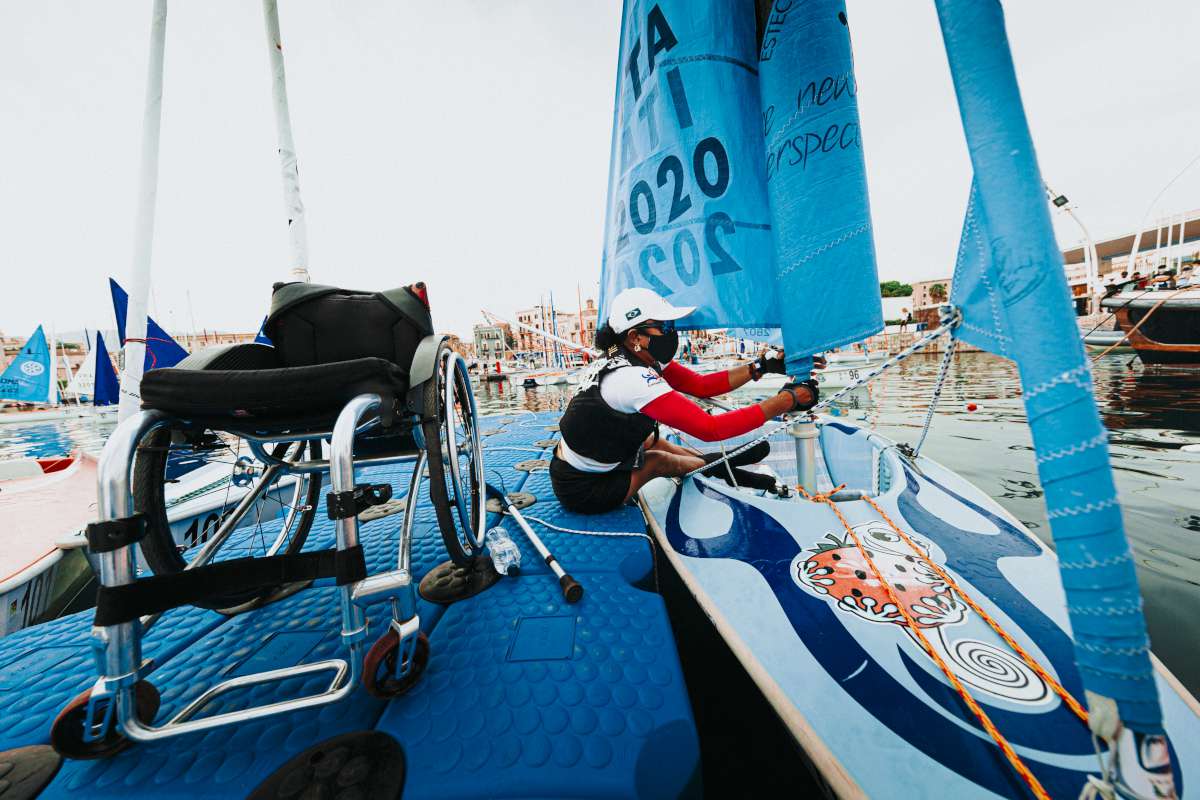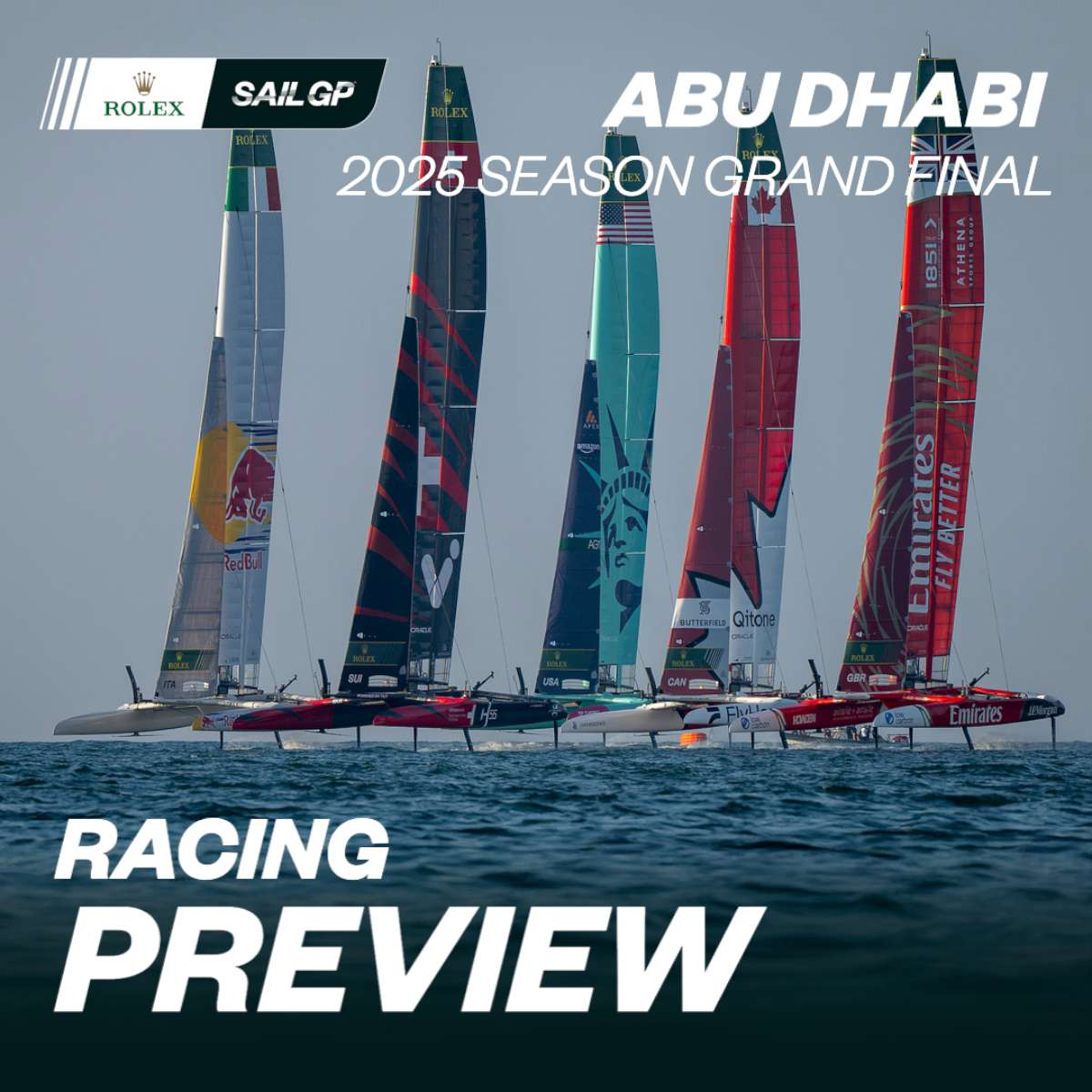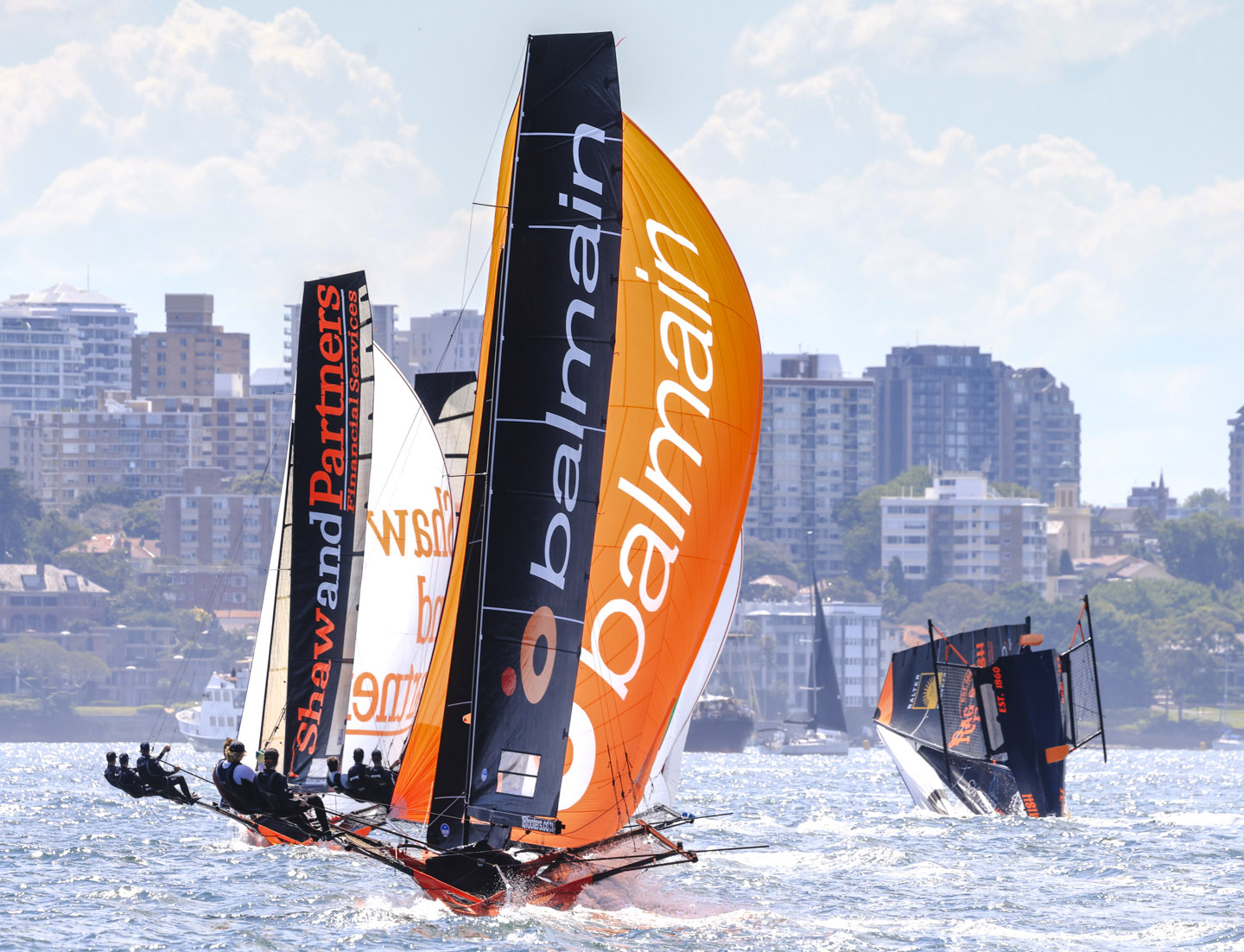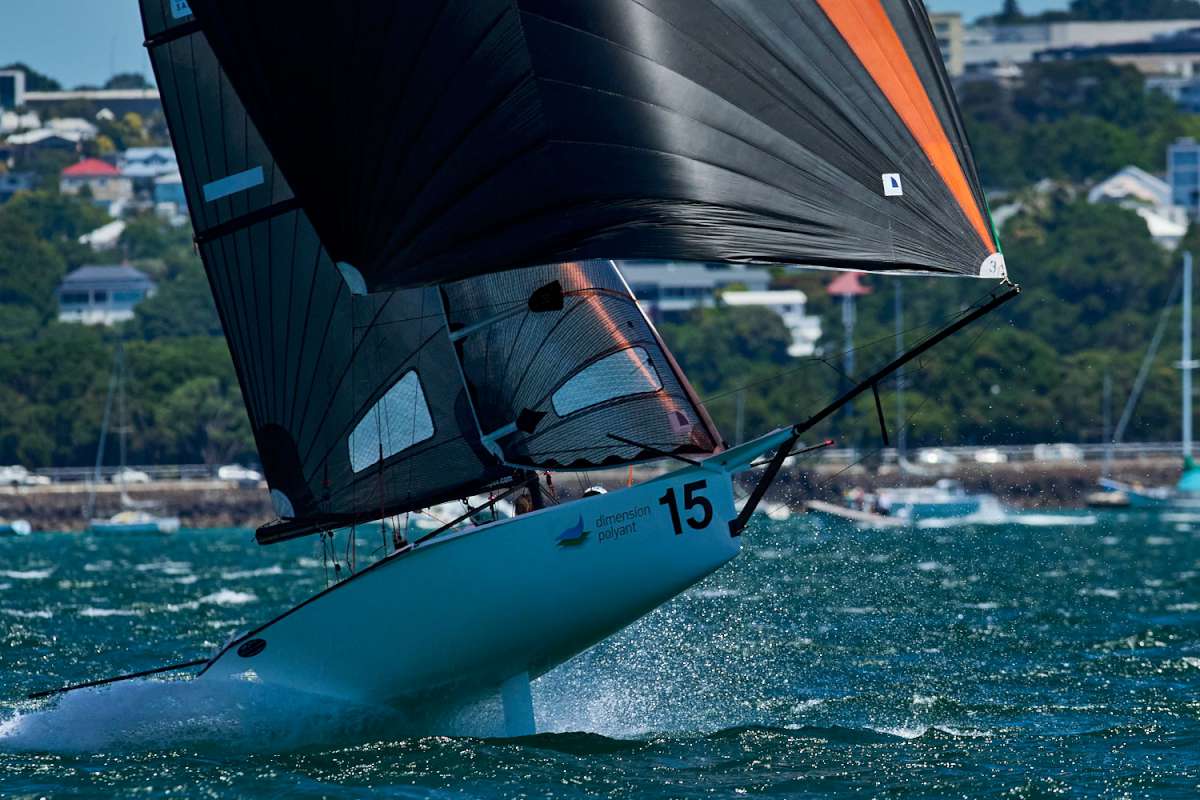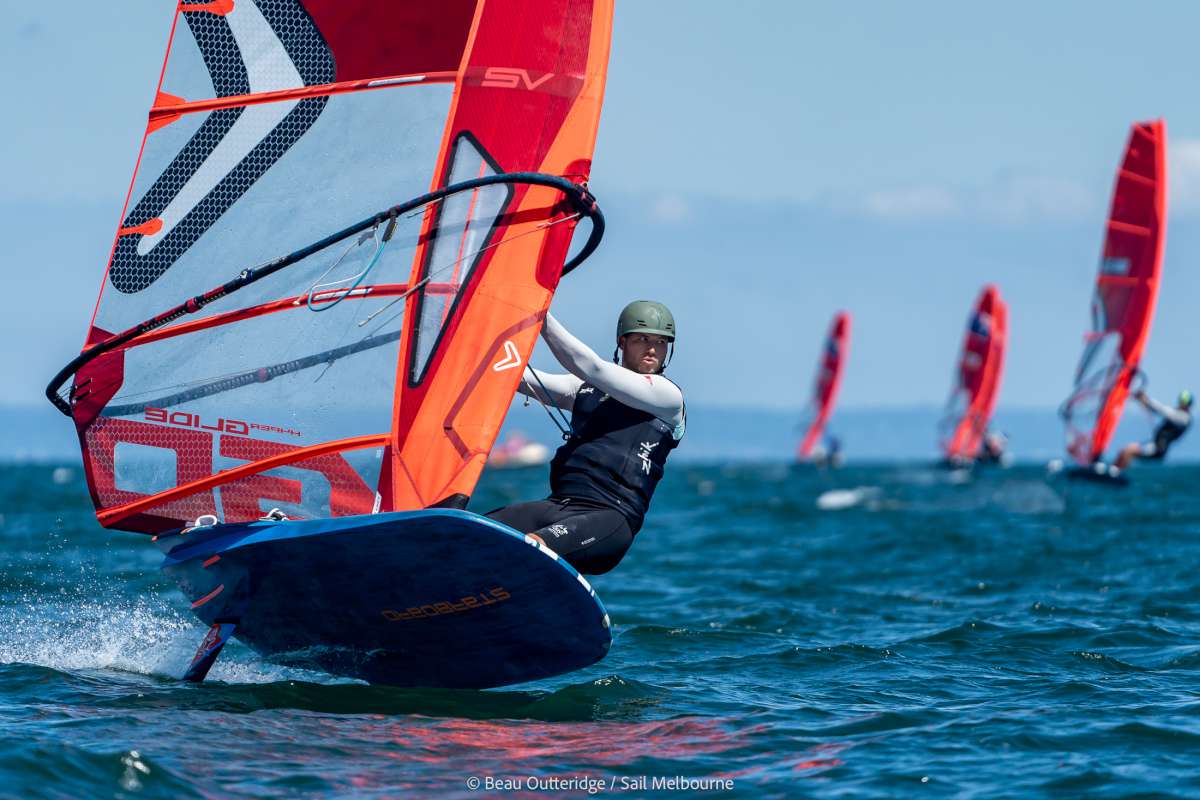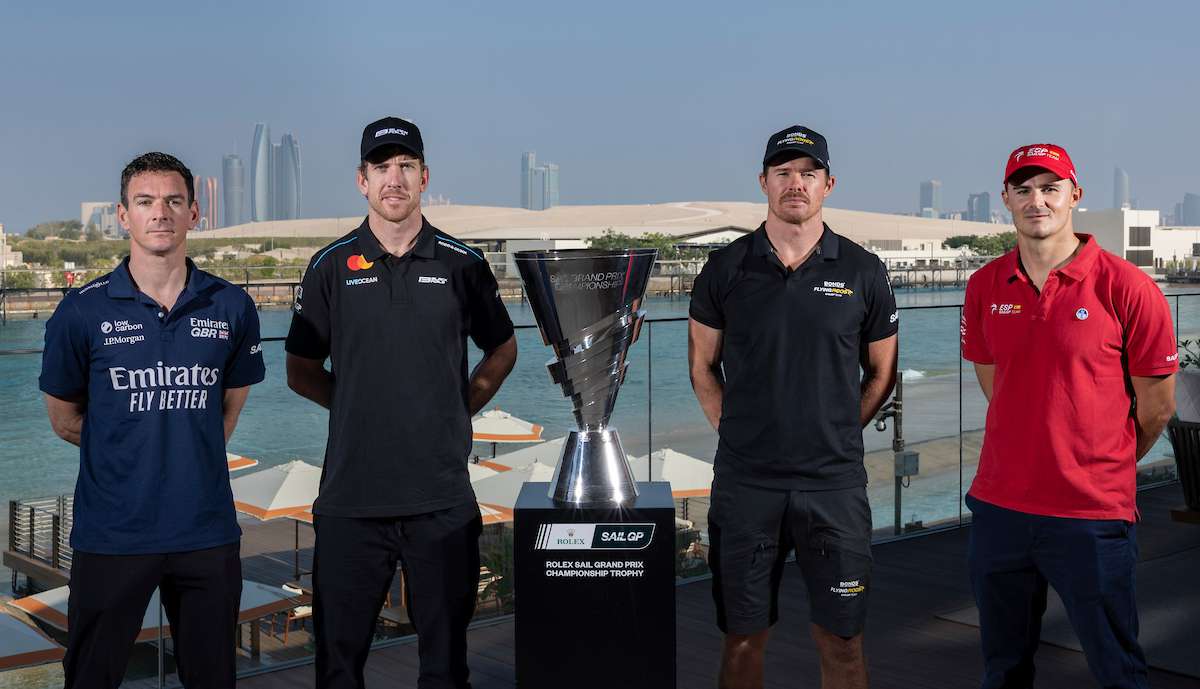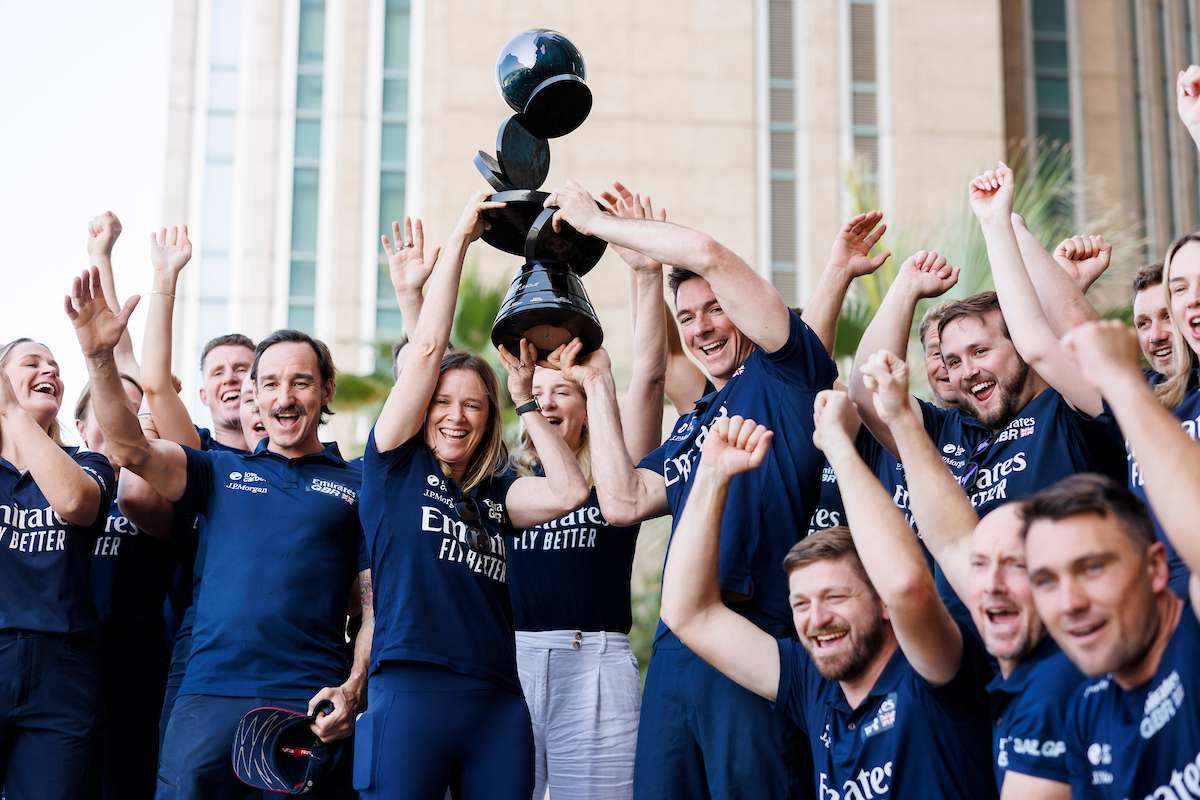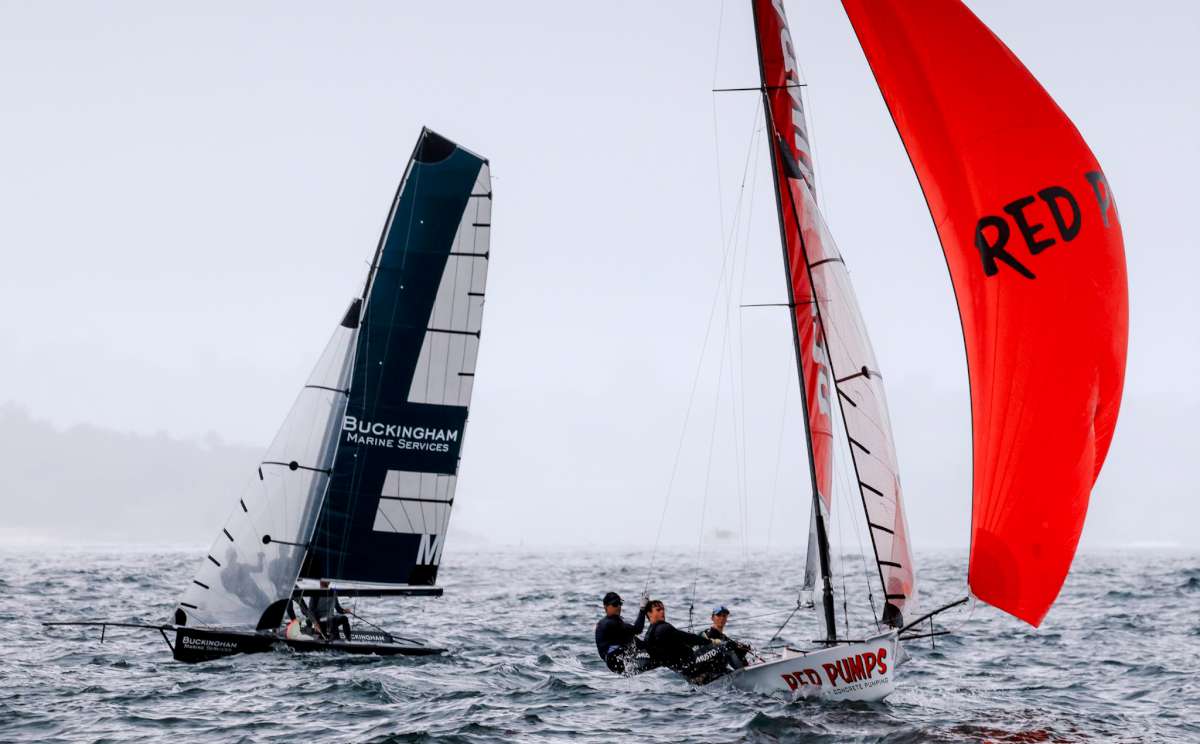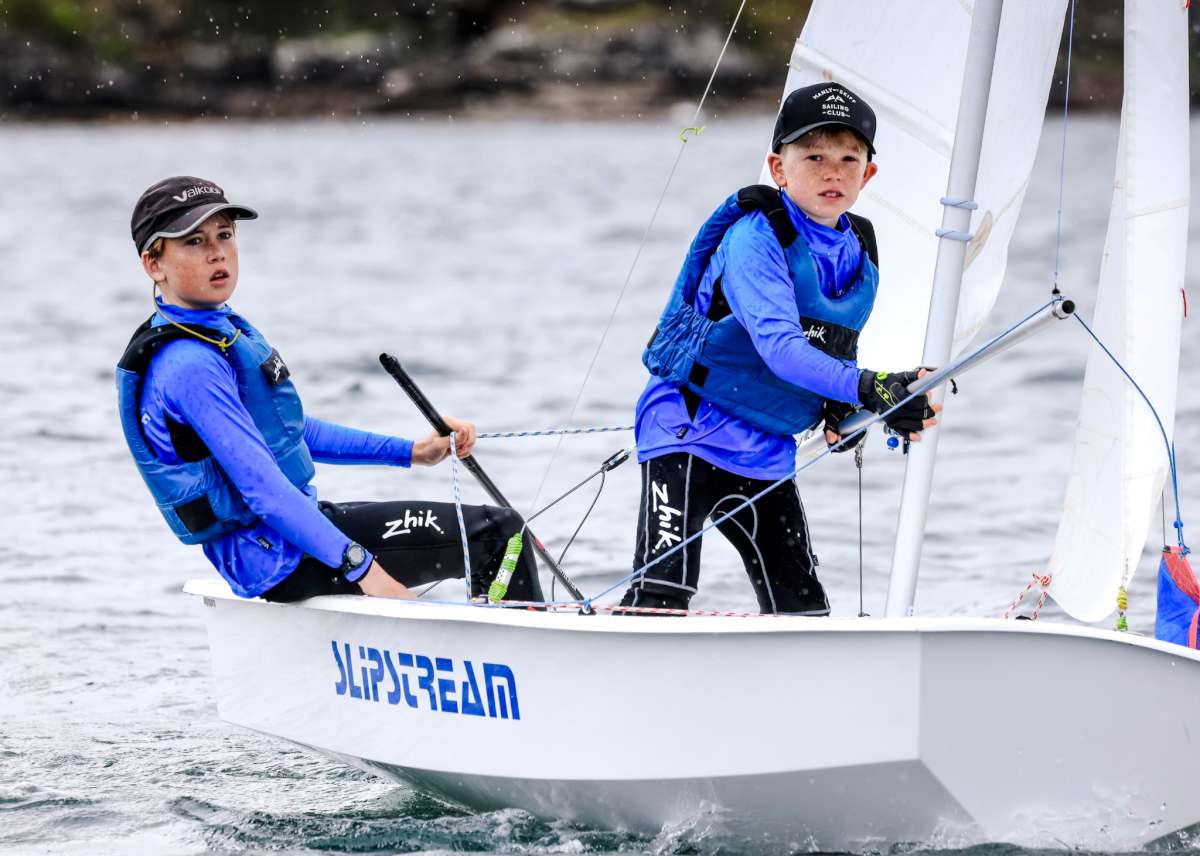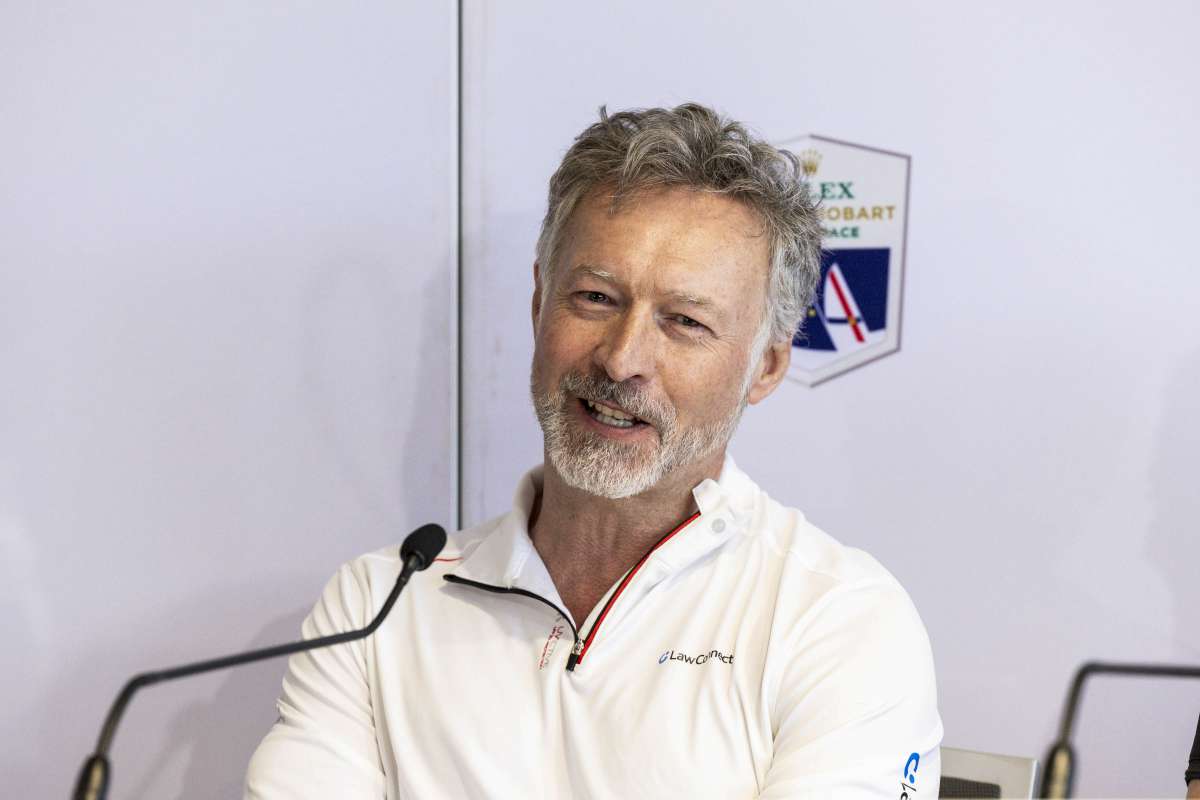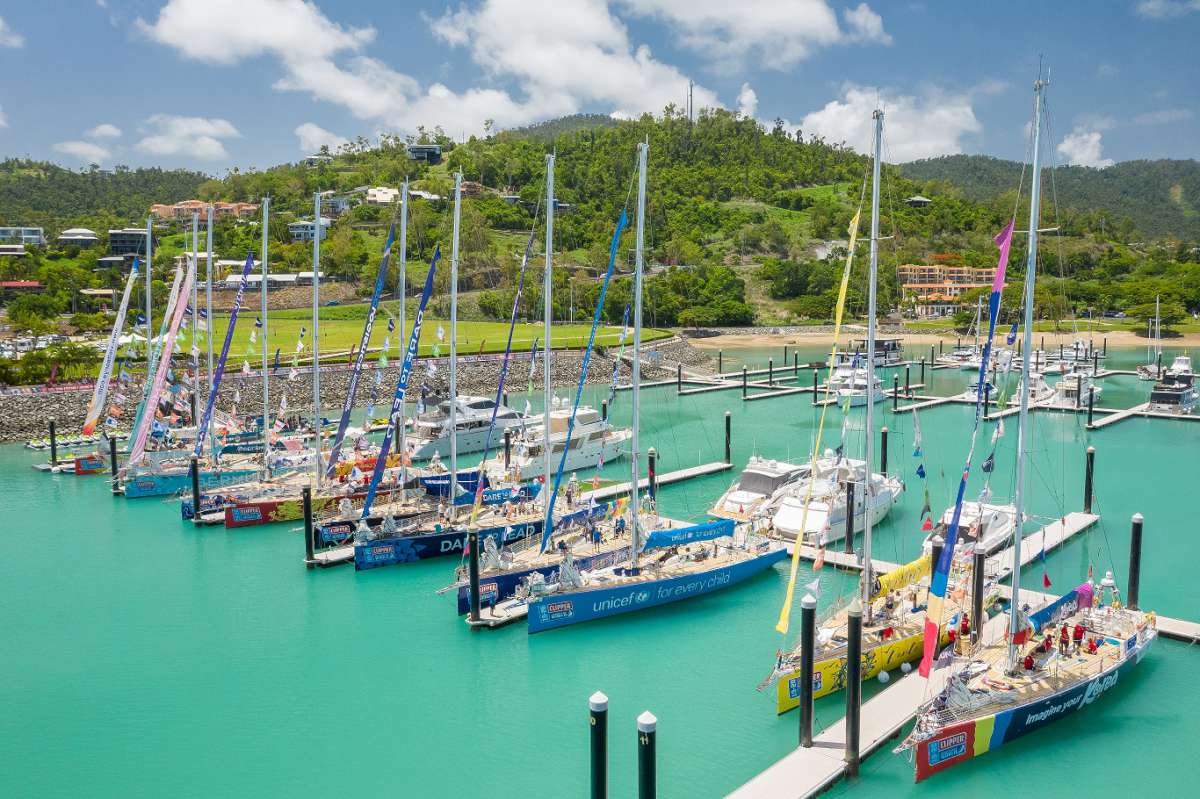The north wind, the 'Tramontana', was blowing steadily as we left the Aeolian islands and sailed south through the Straits of Messina.
We were leaving the Tyrrhenian Sea to enter the Ionian, the notorious cross-currents of the straits made the passage as uncomfortable as we had expected. But we’d already opted for caution and, with the wind from the north, we sailed under fores’ls only: jib and stays’l; to avert any possibility of having the boom crashing around if we were suddenly swung off-course by any really ugly currents.
The ancient Greeks and Romans knew these waters well and wrote of whirlpools being the greatest danger in the straits. We did see some patches of ugly churning water that looked as if they might well whip-up a whirlpool, so we were glad to be through and out of there; just in case.
In the Ionian, the Tramontana was still blowing easily as we headed for the bay of Giardini Naxos, immediately to the south of Taormina; the spectacular town first built by the ancient Greeks where Mount Aetna dominates the landscape.
We wanted to visit friends in Taormina, stock up with a few bottles of local wine from a vineyard on the lower slopes of the volcano. Then choose the weather to have an easy run down the eastern coast of Sicily, across the Sicilian Channel to Malta, thence on to Laranda’s swinging mooring in Dockyard Creek in Grand Harbour. Those were the days.
Today, Dockyard Creek is one huge yacht marina. Some of the world’s largest multi-million dollar mega-boats often lie close by the walls of Fort St Angelo, the great Castello del Mare: 'castle in the sea', as some still like to know it. Yes, it sounds more romantic, yet its history was anything but that.
We had last been ashore in Sicily when the Judas trees were in full bloom. But now it was October and the great bulk of Aetna, the monster that is the very backbone of Sicily, was already deep in snow. No fall of snow, however, could ever have a hope in hell of quietening or extinguishing the vast cauldron of molten lava lying in Aetna’s belly. Currently, the monster has five craters and more than 300 vents fed from Earth’s core, born from the stuff of the universe itself.
His majesty
Aetna is a stratovolcano, it lies above the collision margin of the African and Eurasian plates of earth’s crust. It is one of the most active volcanoes on earth, almost constantly erupting.
Aetna is currently about 3,326 metres high (10,912 feet); eruptions can alter this on a routine basis. The mountain covers an area of 1,900 square kilometres. The circumference of its base is 140 kilometres and, of the three active volcanoes in Italy, Aetna is by far the largest. It is roughly two and a half times the height of Vesuvius.
Because of continental drift, the African plate is pushing down under and raising the Eurasian plate, thus forming: the Maritime Alps of France, the Sierra Nevadas of Spain and the Swiss and Italian Alps. This colossal pressure and friction along the margin of the plates has fractured earth’s crust, marked by the positions of Aetna, Vesuvius and Stromboli.
The Italians know Aetna (Etna) as Montebello, ‘beautiful mountain’, but the Arabs know it perhaps more appropriately as Jabal al-Nar: ‘Mountain of fire'.
In Greek mythology, Zeus, king of the gods, buried the deadly monster, Typhon, beneath the mountain and Aetna’s ensuing eruptions were seen as Typhon’s attempts to break loose from the Underworld. Today, Aetna is probably the most obviously dangerous volcano in Europe.
Once, when I was in a bar in Catania, the old man sitting near me asked if I had come to see Aetna. At first I was surprised that he referred to the mountain as ‘he’, but perhaps that was because of the legend of Typhon.
“He is huge,” he said, “and all of us who live here have a strange love-hate relationship with him. Stromboli, out there in the Aeolian islands, is small by comparison; I’ve been there,” (so had we) “and his neighbour, Vesuvius, up there on the mainland of Italy overlooking the bay of Naples? Just a pimple; and yet we know what pimples can do.
“Aetna? I've seen many eruptions, but I don't believe he is ill-tempered at this moment. The ancients would have prayed to the gods to appease him. I raise a glass of Masala to him every night and ask for his continued friendship. What more can I do?”
I was impressed.
The Roman poet, Virgil who lived from 70BC to 19BC, was on the spot to witness and write about one eruption:
'A spreading bay is there, impregnable
To all invading storms; and Aetna's throat
With roar of frightful ruin thunders nigh.
Now to the realm of light it lifts a cloud
Of pitch-black, whirling smoke, and fiery dust,
Shooting out globes of flame, with monster tongues
That lick the stars; now huge crags of itself,
Out of the bowels of the mountain torn,
Its maw disgorges, while the molten rock
Rolls screaming skyward; from the nether deep
The fathomless abyss makes ebb and flow.'
— Virgil, Aeneid, edition of Theodore C. Williams, ca. 1908
As far as I know, the first recorded details of eruptions are from 396BC, when lava and fallout out stopped a Carthaginian attack on Syracuse; plus from 122BC, when a particularly violent explosive eruption damaged much of the city of Catania.
Aetna is vast; breathtaking, magnificent, overwhelmingly spectacular; awesomely gob-smacking! When I have not seen it, 'him', for a while, he never fails to stop me in my tracks.
Hands across the sea
That day, as we rounded the harbour wall of Giardini Naxos, we had pause to look around us; even before getting on with the business of berthing Laranda. Ahead of us Aetna was mantled in snow, with its famous plume of smoke blowing in the air towards Africa. To the north was the volcanic ridge where the Greeks built Taormina, plus its theatre with Aetna as its backdrop. Astonishing; and the theatre is still a popular place for performance of drama and music.
But back to berthing in Giardini Naxos…
We were surprised to find that the harbour-arm was almost deserted; there were only two yachts moored stern-to, while a Tunisian-flagged fishing trawler was discharging her catch at the quay.
We dropped the hook well out and I was ready to jump ashore with a mooring line, when two guys from the trawler ran along the quay to take our lines and make things easy for us. All I had to do was heave the two lines ashore and they had us secured in minutes.
“Shukaran, Salaam,” I called to the Tunisian guys and stepped ashore to shake hands.
“Afwan. No worries. Aussie?” one asked, pointing to our flag.
“Aiwa.”
The taller one of the two grinned and put up his hand as a stop signal, then patted the air as if asking us to wait.
“Pesce, pesce una momento Signor.”
That curious mix of Arabic-Italian. Then he walked back to his boat, disappeared for a few minutes, coming back with a large plastic bag.
“Ithnaan pesce! Due pesce!” Two fingers in the air as he thrust the bag at me. I knew what he was saying: he had fetched two fish for us.
I opened the bag a looked inside. Yep. Two beautiful fresh fish.
“Shukraan, shukraan,” my Arabic was very basic.
“Afwan” he said and put his hand to his heart. I offered him some money, but he was not having any of it.
“La la, Aussie,” and put his hand to his heart, yet again. Then, still smiling, he clasped my hand in both of his and turned and walked away.
There have been many times we have come into port to find a berth and, if there is anyone around on the quay or harbour arm, they’ve usually come along to help by taking our mooring lines. Usually, but not always.
The Tunisian guys, of course, were not there for pleasure. Their life was at sea, and those who work and live at sea know well the camaraderie that makes that life so special. With just the offer of a helping hand, they fulfill the obligation of seafarers, one to another.
Yet they would not have even given a thought to it being an obligation. It is just something that you do. Well, it’s what some of us do and those guys seemed to have a soft spot for Aussies.
The fish were very fresh; their eyes still as clear as crystal, so we had to eat them that night. We had no fridge on Laranda, never really felt the lack of it. Most of our food aboard was canned and stowed in the comparative cool of the bilges.
In the Med. we were never more than two or three days, four at the most, between ports. Once there, we preferred to eat in the local tavernas or cafes that appeared not to be set-up to appeal to tourists. Eat where the locals eat and you are sure to have a good meal.
We always bought more than enough bread for the time we anticipated to be at sea between ports. Bread and olive oil, perhaps with goats’ cheese and garlic and tomatoes, makes a great and easy breakfast. Fried eggs and fried bread too; we were not counting the calories.
K was gutting and filleting the fish when another of the trawler’s crew called out: “Aussies! Hey kangaroos!”
I put down my cup of coffee and stepped up into the cockpit.
“Hey mister, fair dinky, no worries. Sorry mister. Me captain of fish boat and me think maybe you put other hook out for tonight. If wind come from fire mountain, not good one hook.
“I fix it, take hook out and fix it good? Ithnaan boys do it. Dinghy. No problem. Good idea? OK you? Shwaya, shwaya tif em? All shwaya shwaya”.
“Aiwa, shukran, I’ll get …” I started to reply.
“La la, I fix it, dinghy, two men. Inti, you me hook give, men take my dinghy OK?”
He had it all sorted already, so I fetched the kedge anchor and the longest rope for the job, handed some of its length and the kedge into the dinghy and let it out as they rowed out in the bay. When they waved to tell me the kedge was down, the water there is not very deep, I took up the slack as much as I could on the forward winch and secured it.
The dinghy was soon back and the trawler captain smiled and said “easy peasy captain. No worries. My name Ashraf, Captain Ashraf. Inti, you captain Kangaroo!
“Jena me like your boat, wood boat. Me have wood boat. Tayib and me see you go slow come in. I like. I see many yacht everything panic panic. Mush tayib, no good. Kangaroos come sailing with me? Same same wing. Big wing, go fast. We go Djerba? Tif em?”
“Nif em.” Yes, I got it. He liked wooden boats and probably had a lateen-rigged boat in Tunisia. He was inviting us to go sailing with him from the Isle of Djerba: the island of the lotus eaters in Homer’s Odyssey.
It took a year later but, good as his word, we did just that. We met in Sousse, crossed over to Djerba and his lateen-rigged boat was really something to sail.
It sure was fast, but still the words were ‘shwaya-shwaya'. He seemed to do everything slowly; slowly and easily and in plenty of time; nothing at the last moment; but he was determined to show us how fast his boat would go: like the proverbial tube-train.
When I took the tiller, she was an exciting vessel to put through her paces.
We should all take a page from his sailing manual. Slowly and easily. No worries.
It turned out that one of Ashraf’s six brothers had married an Aussie girl and he had been twice to Australia. Yes, he liked it, but the Australian life was too fast for him: “too busy, busy, money, money. Life too short”.
He preferred it slowly and easily back on his boat on the island Djerba, if he was not out working on the fishing trawler: slowly, slowly, there are plenty more fish in the sea. No worries.
But back in Taormina, just after sunset as Ashraf had said, the wind came from the fire mountain. It blew pretty hard for a couple hours before abating. “No worries,” as Captain Ashraf had said; so back to my bunk where I got to thinking again about Aetna and the volcanoes of the Mediterranean.
Changers of history
It seems strange that many people, sailors amongst them, do not realise or give a thought to the reality of the eastern Mediterranean, particularly the Aegean Sea, being a hot-bed of volcanic and seismic activity; all born of the movement of the plates of earth’s crust and continental drift. As the African plate is pushing down under the European plate, it is also pushing down the bottom of the Mediterranean Sea.
The Aegean Sea is littered with evidence of ancient earthquakes and volcanic activity, the most famous volcano is Thira (Thera), the island of Santorini, now one of the most popular tourist resorts.
As a super-volcano, Thira is the largest and most famous in the area. Thira’s last totally catastrophic explosion was in the late Bronze Age some 3,500 years ago. Volcanologists and historians tell us that the colossal tsunamis it generated wiped out many towns and cities around the eastern Mediterranean basin.
The most famous of them was the fabulous Minoan civilisation centred at Knossos on the island of Crete. That eruption is calculated to have been the largest volcanic explosion in the history of mankind, but it was apparently only one of many where Thira was concerned.
Geologists now tell us that the volcano was just doing its thing in a repetitive process. After a huge explosive eruption, the mountain would collapse and implode into the sea with the crater filled with water. Over time, small eruptions would, again, gradually fill the crater with ash and rubble and continue building a new volcanic mountain until the next explosive eruption blew everything sky-high.
Today, Thira is in one of its quiet occasional eruption modes and these small eruptions are working on the in-fill.
The shape of the Santorini group of islands shows this very clearly. Some historians now believe the island was the legendary Atlantis and that it was the colossal explosion of the Minoan period known also as the Minoan Eruption, that was the basis of Plato’s writing about Atlantis.
Geologically, Thira, Santorini, as most people know it, is all that is left of a massive ancient exploded volcano. Its bow-shaped rim and the smaller islands of Thirasia and Aspronísi form a huge open lagoon that measures 60 kilometres in circumference.
Within the lagoon and roughly near its centre, there are two small active volcanic islands: Néa Kaméni (New Burnt Island) and Palaía Kaméni (Old Burnt Island), plus the summit of what is left of the volcano 566m high.
The town of Thira was badly damaged by the earthquake of 1956 and in that same ’quake, the old port of Oía, at the northern entrance to the lagoon, was totally destroyed.
We visited Santorini a few times, usually as we crossed the Aegean from Turkey to Malta and I managed to buy a few prints of old photographic images of the 1930 eruption.
The Aeolian islands, just north of Sicily, are also volcanic and it was during this trip, only days before we came south through the Straits of Messina, that we spent a week there, visiting each island and taking a close look at Stromboli.
It looks the perfect volcano, Aetna’s ‘little brother’, he is also almost continuously bubbling away. In 2018 Stromboli put on a stunning fireworks display, but the locals will tell you: “it’s always fireworks, always!”
Then there is the ‘pimple', as the bloke in the bar in Catania said, on the mainland of Italy just across the way, overlooking the Bay of Naples. That pimple’s name is Vesuvius and he may be small, compared with Aetna, but we know what he can do, too. Remember Herculaneum and Pompeii?
Meanwhile back in Giardini Naxos
I must have slept heavily while the wind blew from the fire mountain, I woke with K shaking me for a cup of tea. Just in time for poached fish for breakfast.
Then I noticed that our new-found Tunisian friend, Captain Ashaf, was sitting in Laranda’s cockpit drinking a glass of mint tea.
“You sleep late Capitan Kangaroo,” he said and laughed, “so no good fisherman I think. I go ashore now for, forrrrrr bread! Kubz, bread.
“You want I bring you?”
“Yes please Ashraf” K replied quickly.
“Aha,” I grunted, “first-name terms already. Good.”
“Aiwa Capitan” Ashraf said, giving me a crooked smile and a mock salute as he stood up and balanced on Laranda’s narrow stern. “But you Capitan Kangaroo,” he grinned again, the salute was now a thumbs-up sign, “bread soon, hamsa …err… cinque minute. Shana, hot. Bye.”
With that he jumped the gap to the quay with the ease of a young rock wallaby.
“Ashraf!” I called after him, “your first name is rock wallaby!”
&#x





